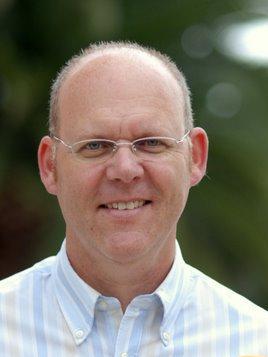- Presentation
- Members
- Research Lines
- Projects
Presentation
Over the last decade, the Division of Microelectronics and Microsystems (DMEMS) of the Institute of Applied Microelectronics (IUMA) has explored the scientific and technological fields of microelectromechanical systems (MEMS) design and the analysis and optimization of embedded systems that include MEMS.
The group's activity, and therefore its expertise, is extensive in the design of complex high-performance systems, combining knowledge of signal processing, packet switching systems in high-speed networks, and design and co-design technologies for IP core-based SoC, with the specification of architectures, the development of design tools, and the modeling and design of application-specific integrated circuits.
Over the past years, the division has participated in multidisciplinary European projects that include knowledge areas in biology (nutrition, genetics, pathology, among others) and electronics (microelectronics, computer architecture, among others) with applications to the aquaculture industry. It has developed patents, with multidisciplinary teams, including the biosensor device AEFishBIT. This device is an implant for detecting the physical activity and respiration of species of interest in aquaculture. AEFishBIT is currently used for sampling juvenile and adult individuals of sea bass, gilthead bream, and salmon, monitoring behavior and gill movement, and its relationship with the nutrition, genetics, and pathology of the species. Other applications in the context of European projects with national and local interest include monitoring systems for oceanic cages in aquaculture, through embedded systems that include accelerometers (MEMS) powered by batteries or energy recovery (MoonlightBIT). MoonlightBIT is an autonomous monitoring system for open-sea aquaculture cage mooring lines, both for structural and environmental parameter monitoring.
Director:
Microelectronics and Microsystems (MEMS)
Responsible: Dr. Juan Antonio Montiel Nelson
UNESCO Code: 3307
SL4.1: Nano and Micro Electromechanical Systems
T1: MEMS Design
The field of microsensors and microactuators, called MEMS ("microelectromechanical systems"), has grown spectacularly in this century. Using the same tools developed for electronic circuit design and complementing them with others specific to mechanics and electricity, such as finite element analysis, 3D CAD, among others, miniature sensors, transducers, and mechanical structures are designed, simulated, and manufactured on silicon and other materials. This research line aims to acquire the most complete possible vision of this field, its applications, current and future developments; starting with microfabrication, continuing with advances in microsensors and microtransducers used in the aerospace sector, biomedicine, bioengineering, and their applications; and ending with microelectronic integration techniques of these devices.
T2: Performance Analysis of Systems and Energy Management Analysis
This research line focuses on the performance analysis of systems and energy management and includes associated engineering to find simulated and analytical solutions for real micro and nano systems. The research line includes other areas of interest: heuristic and deterministic optimization methods, quantitative evaluation of systems, stochastic process algebra, queue networks, distributed generation, and solution of very long chains of Markov, discrete event simulation, modeling network traffic and topologies. Research in this group is oriented towards hardware performance analysis, software performance analysis, embedded system performance analysis, system-level performance analysis, and application performance analysis (algorithms).
T3: Modeling of Systems on Chip and Structured Simulation
This activity focuses on two complementary techniques for system design: modeling of Systems on Chip (SoC) and structured simulation of their operation and performance. Modeling techniques are oriented towards describing these systems at high levels of abstraction, so it is necessary to disregard the need to refer to details that are not decisive for their conception at this level. Likewise, at the simulation level, the precise separation of information that is really relevant to the integration of all components within the system is useful, fundamentally affecting the proper transfer of data between them, studied with various quality criteria typical of network study.
T4: Numerical Simulation of Micromechanical Systems for Analysis and Synthesis of MEMS Devices
The finite element method (FEM) is the most widely used method for solving engineering problems, and at the microscale, the interaction of mechanical and electrical properties is of great interest for the design of sensors and actuators.
Sensor system for fish farm cages
Principal Investigator: Dr. Tomás Bautista Delgado
Code: TEC2017-89403-C2-2-R (SI-1479)
Funded by: Government of Spain
Start Date: 2018 ― End Date: 2020
